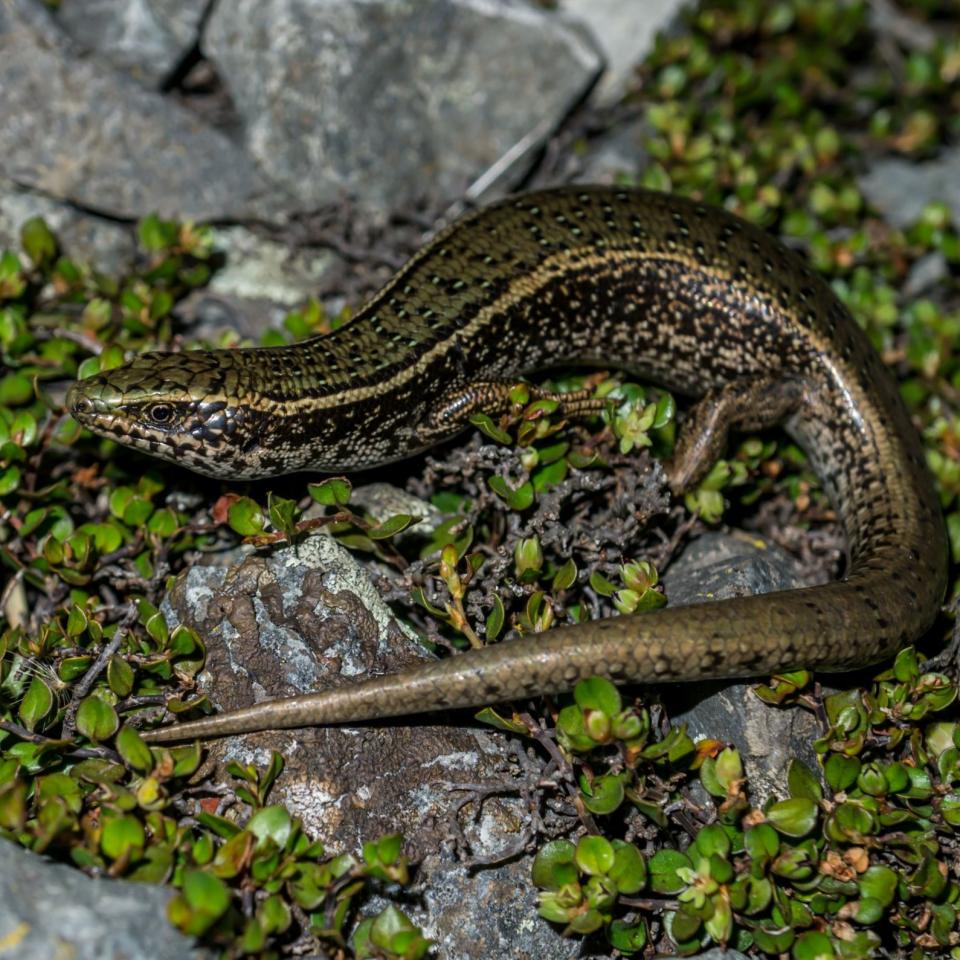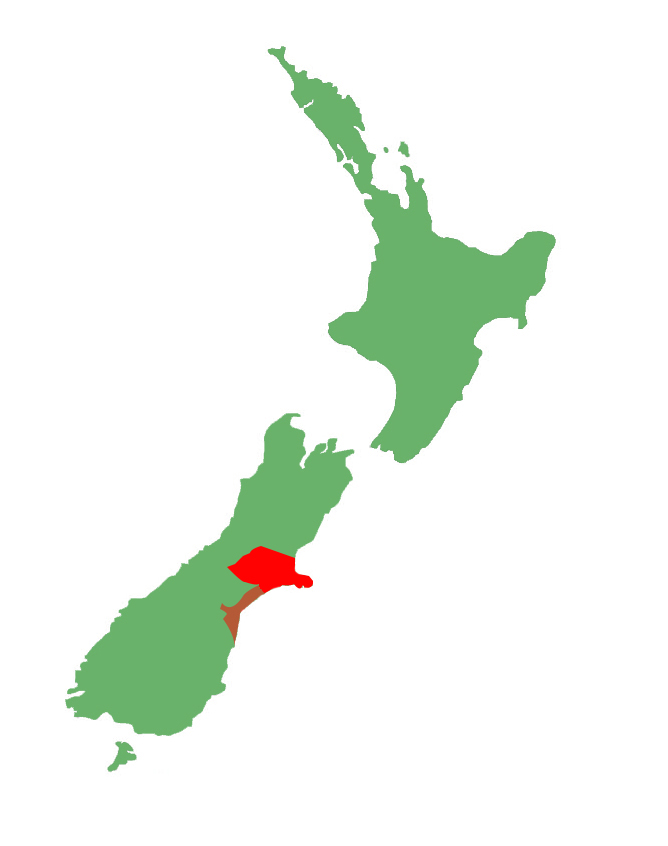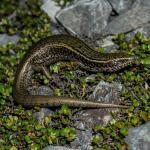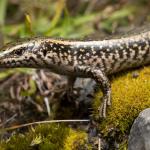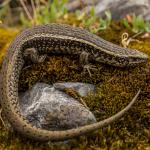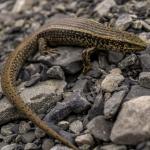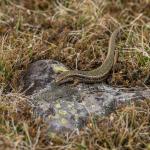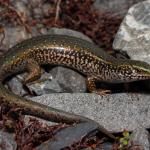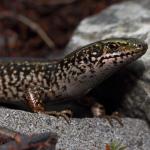- Home
- Herpetofauna Index
- Native
- Oligosoma Lineoocellatum
Oligosoma lineoocellatum
Canterbury spotted skink
Oligosoma lineoocellatum
(Duméril & Duméril, 1851)
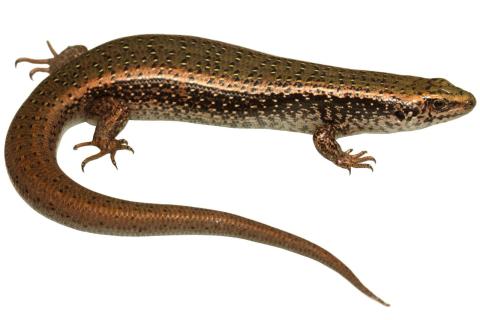
Length: SVL up to 110mm, with the tail being longer than the body length
Weight: unknown
Description
A large, and often beautifully coloured skink from the Canterbury region.
The dorsal colour of Canterbury spotted skinks is typically a brown to olive green, with lighter-coloured dots (ocelli) and dark speckles scattered along the back and tail. Canterbury spotted skinks often have cream-coloured dorsolateral stripes which break up on the tail, the flanks are often dark with white or cream flecking, and the ventral surface (belly) is often a uniform grey, but can be flushed with pink or orange tones.
Life expectancy
Unknown.
Distribution
Canterbury spotted skinks are restricted to the Canterbury region, occurring from Mount Grey / Maukatere in the north through to the Rangitata River, and east through to the Banks Peninsula. Potentially could occur further south in Canterbury, but future surveys would need to be carried out to confirm this.
Ecology and habitat
Canterbury spotted skinks are avid-sunbaskers and bold in character, making them a particularly conspicuous species. They prefer open/sunny areas such as boulder beaches, sand dunes, and coastal scrub, as well as grassland, shrubland, rock piles, and scree slopes at inland sites. They are mainly terrestrial, but will also climb shrubs to forage for insects and berries above ground. When not basking or foraging, Canterbury spotted skinks will take refuge under coastal debris, rocks, logs, or in dense vegetation such as thick grass or flax (Phormium spp.).
Social structure
Largely unknown.
Breeding biology
Viviparous (Live bearing). Females give birth to 1-3 young from February to March.
Diet
In common with other species of New Zealand skink, the diet of Canterbury spotted skinks includes a wide range of invertebrates, and the berries / fruit and nectar of native plant species. They have also been recorded preying on smaller skink species such as McCann's skink (Oligosoma maccanni).
Disease
Canterbury spotted skinks are a known host for the ectoparasitic mite Odontacarus lygosomae.
Conservation strategy
Canterbury spotted skinks were until recently regarded as 'Threatened - Nationally Vulnerable', however, due to recent genetic work and their ongoing decline in lowland sites, due to the ongoing effects of habitat modification and predation by mammalian predators (rodents, mustelids, hedgehogs, and cats), they were reclassified as 'Threatened - Nationally Critical' - the highest threat classification. This species is not currently being managed.
Interesting notes
Canterbury spotted skinks are members of the spotted skink species complex. 'Spotted skinks' are a group of four closely-related species which are difficult to distinguish morphologically (based on appearance), and were originally regarded as one variable and widely distributed species. Spotted skinks are regionally distributed from the southern North Island to the central South Island. Other species include the northern spotted skink (Oligosoma kokowai), Mackenzie skink (Oligosoma prasinum) and Marlborough spotted skink (Oligosoma elium).
References
Hitchmough, R.A., Barr, B., Lettink, M., Monks, J., Reardon, J., Tocher, M., van Winkel, D., Rolfe, J. (2016). Conservation status of New Zealand reptiles, 2015; New Zealand threat classification series 17. Wellington: New Zealand Department of Conservation.
Jewell, T. (2011). A photographic guide to reptiles and amphibians of New Zealand. Auckland: New Holland Publishing.
van Winkel, D., Baling, M. & Hitchmough, R. (2018). Reptiles and Amphibians of New Zealand: A Field Guide. Auckland: Auckland University Press, 376 pp.

